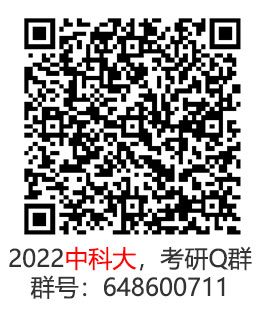A tangled web
错综复杂的网络
Who goes online, and where
谁在网上,在哪里?
THE internet looks like an adman's dream. Counting how many times an advert on a bus shelter has been viewed is impossible; counting clicks on a blinking banner ad is a doddle. But knowing where each click came from, and how many people are clicking, is harder than it appears.
互联网对于广告人而言太神奇了。没法计算公交站亭上的广告被观看的次数,但却可以轻而易举地计数一条屏幕闪动的广告栏的点击量。可是,要弄清楚每个点击从何而来,有多少人点击过,就比看起来难多了。
Firms dedicated to click-counting put code on websites that reports the times, origins and frequencies of visits, or get consumers to install it buried in browser plug-ins or mobile apps.These record web-users' digital calling-cards: the internet-protocol (IP) addresses of the devices they are using. But to assume that each IP address represents a single user in its country of registration is a wild oversimplification.
许多热衷点击量的公司,在网站上附加代码,用来跟踪访问的时间、来源以及频率,或者让用户安装隐藏在浏览器插件中或者是移动应用程序中的这些代码。这些代码记录网络用户的数字名片——这就是用户使用设备的互联网协议地址(IP 地址)。但如果想当然假设每个IP 地址就代表了在地址注册国的单个用户,那你就弱爆了。
A new report published on November 4th takes a different approach. Global Web Index (GWI), a market-research firm with local partners in 32 countries, surveys 170,000 consumers a year and recently began to ask detailed questions about internet use. It puts China and India in the top three for Facebook users. Similar Web, which does IP-based analysis, does not even put China in the top ten (see maps).
11 月4 日发表的一份新的报告则采用了不同的方法,全球网络指数机构(GWI)是一家市场调研公司,在32 个国家拥有当地合作伙伴,他们一年调查了17 万名消费者,并且最近开始探究互联网使用的细节问题。该机构将中国和印度放在3 大facebook 用户国的地位。而基于IP 地址分析的Similar Web,则甚至把中国排到10 名开外。
One reason for the difference is that in many developing markets devices are widely shared (for tablets that is true pretty much everywhere). Conversely, more than three-quarters of respondents in the GWI report said they used more than one device. Another factor is the spread of virtual private networks (VPNs) and proxy servers, which make it possible to surf the web through a foreign server.
造成如此差异的原因之一是在很多发展中市场中,设备被广泛共享(对于平板电脑则哪里都差不多)。相反,GWI 的报告中,超过3/4 的受访者称他们使用不止一台设备。另一个因素是虚拟专用网(VPNs)和虚拟服务器的广泛使用,使得人们能够通过海外服务器浏览网页。
Once restricted to the tech-literate, these are now common and easy to use. Chinese citizens who want to vault the Great Firewall to use Facebook (banned in China) can do so with a couple of clicks. Foreign fans of the BBC can use the same trick to watch its programmes via iPlayer,supposedly barred outside Britain. Since VPNs and proxy servers are clustered in countries with favourable rules, such as Sweden and the Netherlands, any count of visits to such sites will be skewed.
技术控一旦遇到限制,这类(通过海外服务器)的方式就会普遍而轻易地使用。需要翻墙使用Facebook 的中国公民(Facebook 在中国是禁止的),能轻点鼠标得偿所愿。需要通过IPlayer观看节目的国外BBC 粉丝可以如法炮制,而据说这是在英国以外不允许的。因为VPNs 和代理服务器的分布会根据趋利避害的原则,集中在例如瑞典和荷兰这样的国家,因此任何对上述类型网站访问的计数都会产生偏差。
GWI's picture, it should be said, is far from complete. It misses out Africa entirely, except for South Africa. Self-reported data also have their pitfalls: LIRNEasia, an Asia-Pacific IT think-tank, recently found that many Indonesians who reported using Facebook said they were not internet users—perhaps because they were not sure that one implies the other. And much of the world is going mobile-only, particularly in developing markets; preliminary GWI data suggest that a quarter of web visitors in Indonesia and Vietnam use only a mobile (from which VPN access is,these days, just as easy). Yet both surveys and click-counting software were conceived and optimised for desktop users. Uptake of mobiles is faster than the effort to capture demographic data from them.
应该说GWI 的图片还远远没有完成。因为它遗漏了除南非以外的整个非洲。自说自画的报告也存在其缺陷: 亚洲LIRNE 是一个亚太区域的网络智囊库,最近发现许多被报告称正在使用FACEBOOK 的印尼人称自己并非互联网用户— 这也许是因为他们不能确定FACEBOOK 就意味着互联网。此外,世界上许多地区仅仅能用手机通讯,由其是在发展中市场;GWI 初步数据显示,在印尼和越南,1/4 的人仅仅使用一部手机上网。(如今通过手机,虚拟专用网接入非常容易)。不过,人们已经为手机桌面用户量身定做了调查软件和点击率软件。统计手机信息比搞数据一个个去搞数据采集可快多了。
More broadly, knowing who is online, and where, would benefit government policymakers as well as advertisers. Other figures on technology use are available from the International Telecommunication Union (ITU), a UN agency. But there are gaps here, too. It collates surveys from national census bureaus around the world, but cannot insist that they all pose the same questions.
从广义上说,搞清楚谁,在哪里在线,可不仅仅有利于广告商,更有助于政府的决策者。其他技术使用指数可以从国际电信联盟(ITU)获得,ITU 一个联合国机构。但问题也来了,该机构整理从世界各个国家统计机构传送的数据,但不能确认他们提出了相同的问题。
Better figures would be useful, says Susan Teltscher of the ITU. They would help the agency fulfil its mission to ensure web content is available in the languages of its users. In nations where internet use is low, says Kojo Boakye of the World Wide Web Foundation, radio is regarded as the medium with the widest reach. Revised figures for web use would shift how public-service messages are distributed. And as internet use spreads, regulators will have to oversee competition between service providers, fight e-crime and plan investment in web infrastructure. But such efforts rely on the numbers that now seem so muddy, points out Geoff Huston, a researcher at APNIC, the internet registry for the Asia-Pacific region.
ITU 的Susan Teltscher 认为需要更有效的数据,这将有助于该机构完成使命,以确保网络内容在用户的语言中可见。万维网基金会的Kojo Boakye 则认为,在互联网使用率低的国家,广播被看作最广泛的媒介。关于网络使用修正后的数据将改变公共服务机构的信息如何发布。并且,因为互联网使用的分布,监管者将不得不监管服务商之间的竞争,打击网络犯罪和进行网络基础设施投资计划。但是,亚太地区的互联网注册机构APNIC 的研究员Geoff Huston 指出,这种依赖数字的努力看起来还在探索之中。
The ITU estimates that 4.3 billion people around the world are yet to get online, 90% of whom are in developing countries. But until data from surveys and clicks can be combined into a single picture, the map of internet usage will be little clearer than the viewership of bus-shelter ads.
国际电信联盟估计,全球43 亿人无法上网,其中90%的人处于发展中国家。但只要调研数据和点击能被合并到整张图表中,互联网使用率地图会计算比候车亭广告的收视率更清楚一点。
(责任编辑:科大科院考研网)























